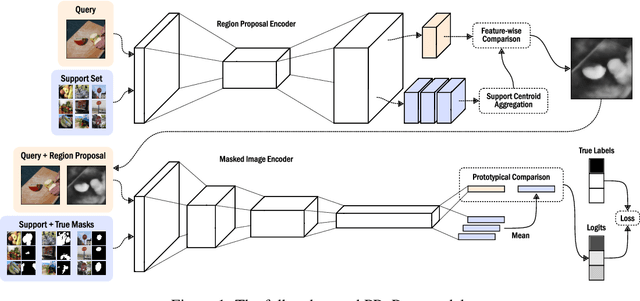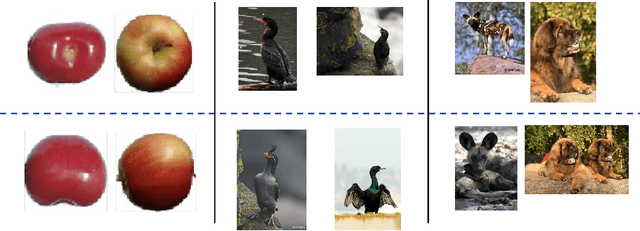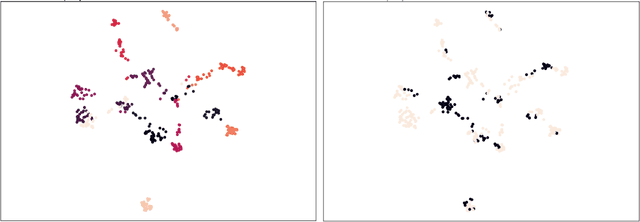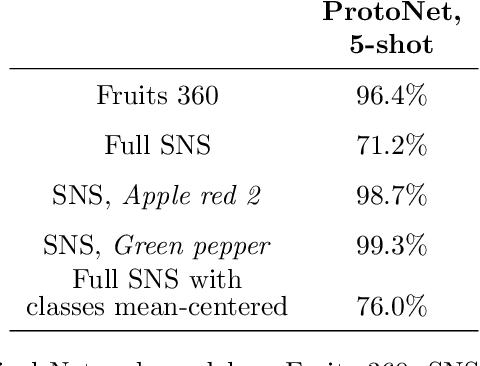Andrew Avila
Prototypical Region Proposal Networks for Few-Shot Localization and Classification
Apr 08, 2021


Abstract:Recently proposed few-shot image classification methods have generally focused on use cases where the objects to be classified are the central subject of images. Despite success on benchmark vision datasets aligned with this use case, these methods typically fail on use cases involving densely-annotated, busy images: images common in the wild where objects of relevance are not the central subject, instead appearing potentially occluded, small, or among other incidental objects belonging to other classes of potential interest. To localize relevant objects, we employ a prototype-based few-shot segmentation model which compares the encoded features of unlabeled query images with support class centroids to produce region proposals indicating the presence and location of support set classes in a query image. These region proposals are then used as additional conditioning input to few-shot image classifiers. We develop a framework to unify the two stages (segmentation and classification) into an end-to-end classification model -- PRoPnet -- and empirically demonstrate that our methods improve accuracy on image datasets with natural scenes containing multiple object classes.
Fuzzy Simplicial Networks: A Topology-Inspired Model to Improve Task Generalization in Few-shot Learning
Sep 23, 2020



Abstract:Deep learning has shown great success in settings with massive amounts of data but has struggled when data is limited. Few-shot learning algorithms, which seek to address this limitation, are designed to generalize well to new tasks with limited data. Typically, models are evaluated on unseen classes and datasets that are defined by the same fundamental task as they are trained for (e.g. category membership). One can also ask how well a model can generalize to fundamentally different tasks within a fixed dataset (for example: moving from category membership to tasks that involve detecting object orientation or quantity). To formalize this kind of shift we define a notion of "independence of tasks" and identify three new sets of labels for established computer vision datasets that test a model's ability to generalize to tasks which draw on orthogonal attributes in the data. We use these datasets to investigate the failure modes of metric-based few-shot models. Based on our findings, we introduce a new few-shot model called Fuzzy Simplicial Networks (FSN) which leverages a construction from topology to more flexibly represent each class from limited data. In particular, FSN models can not only form multiple representations for a given class but can also begin to capture the low-dimensional structure which characterizes class manifolds in the encoded space of deep networks. We show that FSN outperforms state-of-the-art models on the challenging tasks we introduce in this paper while remaining competitive on standard few-shot benchmarks.
 Add to Chrome
Add to Chrome Add to Firefox
Add to Firefox Add to Edge
Add to Edge